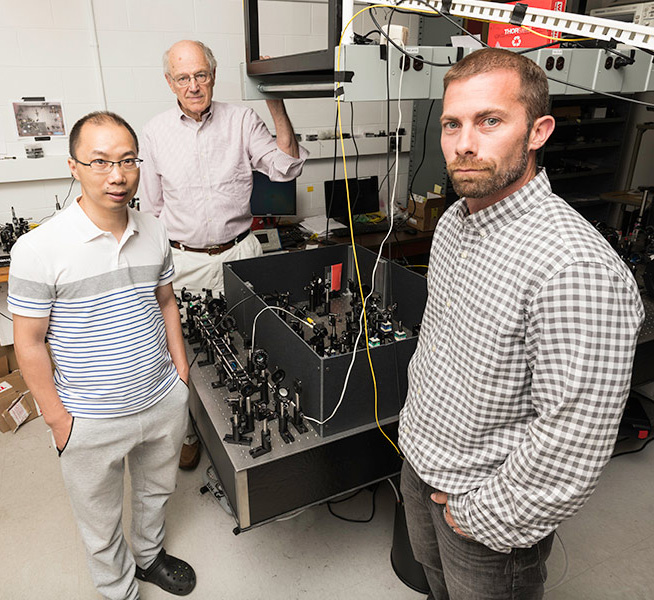Resolving quantum ‘weirdness’: A new look at the duality of light

A grain of sand is small and hard; a wisp of fog is wavy and nebulous. And we know that fog’s very nature prevents it ever being small and hard like a sand grain, and we’re sure that a sand grain can’t take on the loose wave character of fog.
And yet, for 90 years physicists have known that these incompatibly opposite properties are inherent in all elementary particles – such as electrons, photons, and mesons – and any of them can be observed to have either property at any time.
Nobel laureate Niels Bohr, the founder of modern atomic physics, attempted to resolve this existential dilemma of quantum mechanics by a kind of high-level wordsmithing. He invented the principle of complementarity, which simply asserts that, in some experiments, quantum objects will be found to be localized and act like particles, and in different experiments exactly the same quantum object will be spread out and act like a wave.
Now University of Rochester researchers, in a paper published in Optica, say they’ve resolved this weird—a term used by physicists themselves—and inescapable wave-particle duality by discovering the intimate connection between duality and another equally weird feature of quantum mechanics, namely entanglement.
Lead author Xiaofeng Qian, a research associate at the University’s Institute of Optics; Nick Vamivakas, associate professor of quantum optics and quantum physics; and Joseph Eberly, the Andrew Carnegie Professor of Physics, conclude that each of the features of quantum weirdness—entanglement and duality—precisely controls the other.
